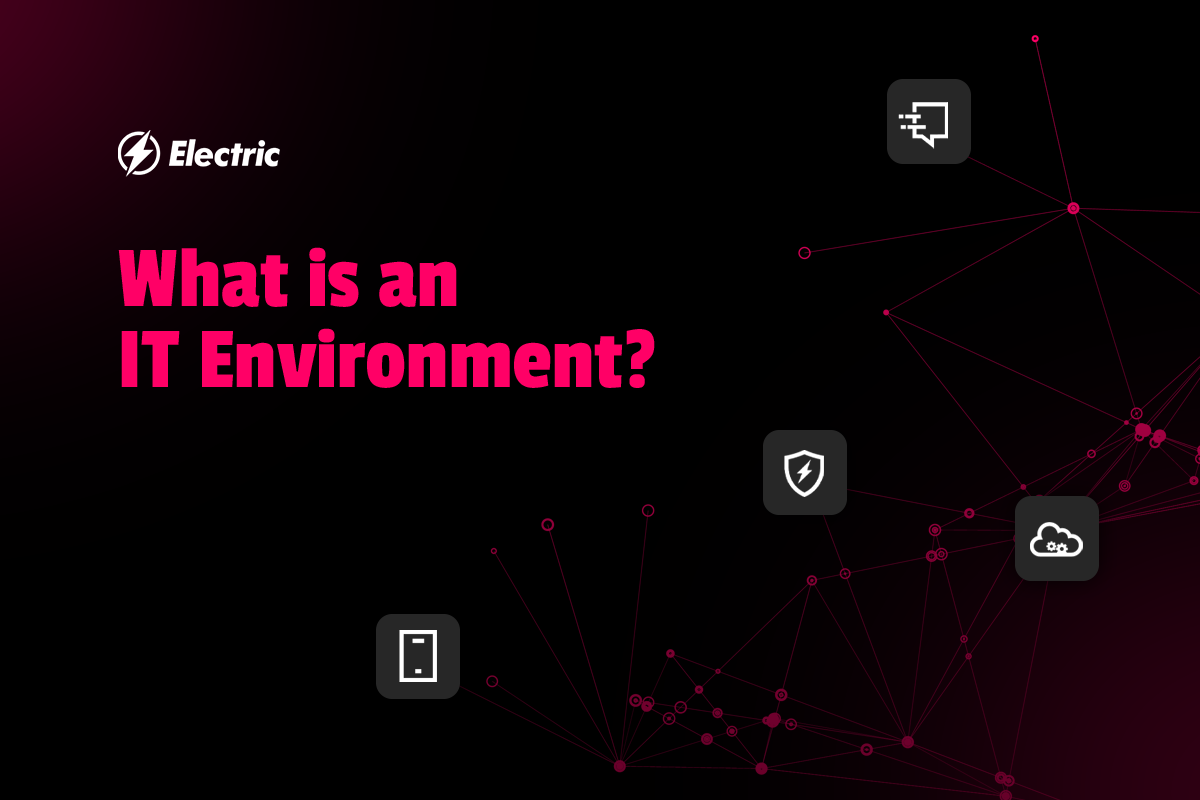
Modern businesses rely on technology to perform day-to-day operations and maximize productivity. Effective use of tech resources improves workplace efficiency, reduces operational costs, and improves communications. However, the success of technology application in a business is heavily dependent on the organization’s overall IT environment.
That’s why, as a business owner or manager, you should constantly evaluate the health of your IT environment to identify any problem areas and make the relevant changes. This guide explores everything you should know about managing an IT environment in a contemporary business.
What is an IT environment?
The term “IT environment” refers to the infrastructure, hardware, software, and systems that a business relies on every day in the course of using information technology (IT). Some of the commonly used resources in an IT environment include computers, internet access, peripheral devices, etc.
Here’s a breakdown of the three different IT environment components for easier understanding:
- Hardware: routers, personal computers, servers, switches, and data centers.
- Software: web servers and applications that make hardware connections effective and more practical.
- Networking: firewalls, cables, and other components which facilitate internal and external communication in a business.
All of the above elements work together to create a healthy IT environment. Expert management of this environment is therefore needed to ensure everything functions as expected.
What is IT Environment Management?
IT environment management is a set of processes that coordinate IT systems, resources, platforms, and the people using them. The primary aim of IT environment management is to keep every IT component functional and efficient
A solid and stable IT environment is crucial to optimize business productivity and save time. Effective management is a wise investment to keep the performance of your IT tools at their best. Here are the main benefits of IT environment management:
1. Enhances your IT systems performance
Proactive management of your IT systems ensures your employees have a positive and productive working experience. Technical hitches and disruptions become less common, which translates to improved employee morale and productivity.
2. Cost reduction
You don’t have to spend as much on IT environment repairs and replacements when you have a proactive management plan. Experts in this space can identify any flaws early and correct them before they become costly to handle or cause negative impacts to your business.
3. Better security
Cyber theft is rising, and your networks and devices need to be secure to reduce your vulnerability to data loss. IT environment management is a reliable way to keep your data or systems secure.
Ideally, IT environment management should be taken care of by dedicated experts. If you don’t have a reliable in-house team, you can always outsource this service. The IT support provider you choose should be able to identify flaws and provide detailed reports of what should be changed to maintain optimum productivity.
How Does a Computer Interact with an IT Environment?
Computers are one of the main elements of an IT environment. But how does a computer interact with the other aspects of the IT environment? In short, they use one of the following computer networks to communicate with each other:
- Local area network
- Wide area network
1. Local Area Network (LAN)
As the name implies, LAN connects computers in a relatively small local area. Take, for example, a single building or an office. All computers in the office can be connected to the same network because they are in the same place. LAN users can even share hardware such as printers, programs, and many more because they are linked to the same network.
2. Wide Area Network (WAN)
WAN covers a larger geographical area than a LAN. For instance, a business expanding to another country may expand its network to reach a new area. While it’s effective, the speed of WAN tends to be lower because it covers a greater distance.
Governance Principles, Standards, and Practices in the IT Environment
IT governance refers to the processes involved in ensuring a business fully utilizes its IT systems and environment to meet its goals and objectives. IT governance is a formal framework that supports decision making and helps businesses to invest confidently in their IT resources.
The three main types of IT frameworks are:
- ISO 2000
- ITIL
- COBIT
IT managers and stakeholders should collaborate to implement IT governance and its associated principles, standards, and practices. However, you should fully understand your specific business needs, such as hardware and data protection, in order to choose the best model.
How to Carry Out an IT Environment Assessment
Your IT systems should always be aligned with your business and its goals. For this reason, you should regularly carry out a thorough assessment of your systems’ security and network capabilities.
An IT environment assessment requires a high level of expertise, so working with a managed IT support provider is advisable. The team of experts involved should thoroughly assess your current IT environment and compare it to the desired performance.
After the analysis, the team responsible should provide a detailed report of their findings, with recommendations on how the IT environment can be improved. It’s also worth noting that an IT environment assessment is not a one-time event. It is an ongoing process, and its frequency depends on the size of your organization, your goals, and your other business needs.
Electric offers managed IT support to small and mid-sized businesses, and can carry out extensive assessments of your current IT environment to identify potential areas that can be optimized. Get in touch with our team to learn about our services, and to start your journey toward maintaining a healthy IT environment.



